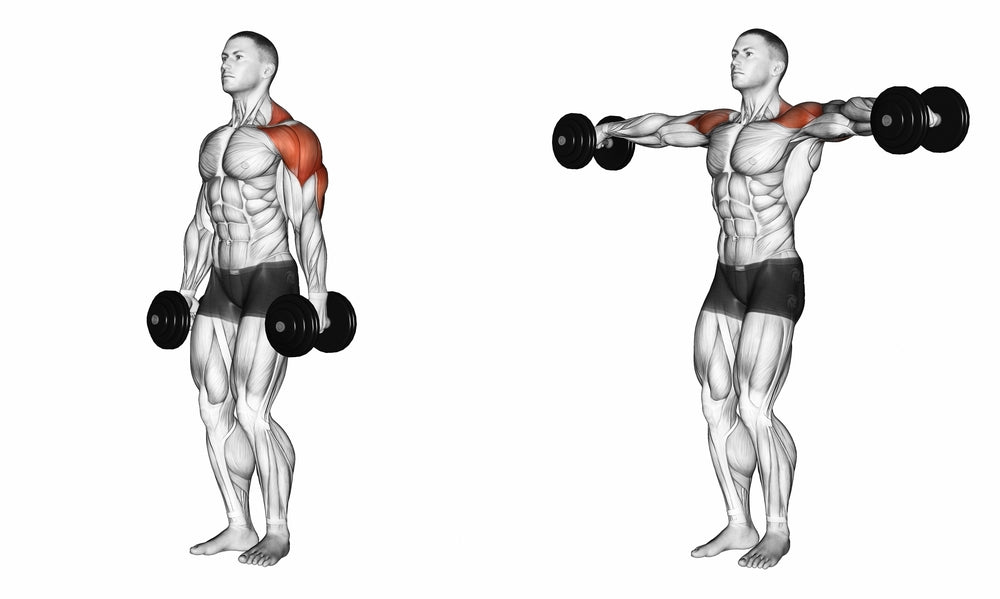Exercise Anatomy
LATERAL DUMBBELL ARM RAISE
The Lateral Dumbbell Arm Raise is a highly effective exercise targeting the shoulder muscles, specifically the lateral or side deltoids. This movement helps enhance shoulder width and definition. What sets it apart is its isolation of the lateral deltoids, promoting balanced shoulder development. Incorporate this exercise for sculpted shoulders and improved upper body aesthetics.

Major Muscles and Actions Involved
During the Lateral Dumbbell Arm Raise, the primary joint action is shoulder abduction, where the arms move away from the body laterally. This movement primarily engages the lateral deltoids, the muscles on the sides of the shoulders. Additionally, the supraspinatus, trapezius, and serratus anterior are also involved in providing stability and support during the exercise.

Sports Uses
The Lateral Dumbbell Arm Raise is particularly beneficial for athletes involved in sports that require strong and well-defined shoulder muscles. This exercise can enhance performance in activities such as basketball, swimming, and volleyball, where shoulder stability and strength play a crucial role. Improved lateral deltoid development contributes to better shoulder function, reducing the risk of injuries and enhancing overall athletic performance in sports that demand upper body strength and mobility.
Exercise Tips
- Controlled Movement: Execute the lateral dumbbell arm raise with a slow and controlled motion to ensure the targeted muscles are effectively engaged throughout the entire range of motion.
- Appropriate Range of Motion: Avoid excessive elevation of the arms to prevent unnecessary stress on the shoulder joints. Aim for a comfortable and controlled range of motion, lifting the dumbbells to shoulder height.
- Moderate Weight Selection: Opt for a moderate weight that challenges the lateral deltoids without compromising form. Too heavy a weight can lead to improper technique and potential strain.
- Variations for Versatility: Explore variations such as seated lateral raises or using cables to add variety to your shoulder workout routine. This helps target the muscles from different angles, promoting overall shoulder development.
- Consistent Breathing Pattern: Maintain a steady breathing rhythm throughout the exercise. Inhale during the lowering phase and exhale while lifting the dumbbells. This breathing pattern helps stabilize the core and enhances overall control during the movement.
